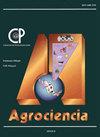PRESENCE OF INTERNATIONALLY BANNED PESTICIDES IN DOMESTIC PERUVIAN QUINOA DURING COVID-19 PANDEMIC
IF 0.5
4区 农林科学
Q4 AGRICULTURE, MULTIDISCIPLINARY
引用次数: 1
Abstract
The global showcase for the promotion of the Andean grain quinoa (Chenopodium quinoa Willd.) resulted in a rapid increase in international demand, which has had a direct impact on Peruvian food safety. The excessive use of pesticides results in high levels of pesticide residues in food, causing both environmental and health problems in the population. The objective of this article was to analyze if residues of internationally banned pesticides were present in the quinoa consumed by Peruvians during the COVID-19 pandemic. Twenty-seven different brands of packed white quinoa (10 sold as organically certified and 17 sold as conventional) were purchased in various supermarkets and bio-shops across metropolitan Lima on January 26, 2021. The pesticide residues in the samples were determined in a laboratory. The study found that Peruvian quinoa not only contained residues of internationally banned pesticides, but also had levels that exceed the maximum residue limits (MRLs) established by the European Union. For consumer safety, it is important that the government make the proposed regulations regarding hazardous pesticides clear to the public.在COVID-19大流行期间,国内秘鲁藜麦中存在国际禁用农药
安第斯谷物藜麦(藜麦野生藜麦)的全球推广展导致国际需求迅速增加,这对秘鲁的食品安全产生了直接影响。过度使用农药导致食品中残留大量农药,给人口造成环境和健康问题。本文的目的是分析秘鲁人在2019冠状病毒病大流行期间食用的藜麦中是否存在国际禁用农药残留。2021年1月26日,在利马大都会的各个超市和生物商店购买了27种不同品牌的包装白藜麦(10种以有机认证出售,17种以传统方式出售)。在实验室对样品中的农药残留量进行了测定。该研究发现,秘鲁藜麦不仅含有国际禁用的农药残留,而且其含量超过了欧盟规定的最大残留限量(MRLs)。为了消费者的安全,重要的是政府要让公众清楚地了解有关危险农药的拟议法规。
本文章由计算机程序翻译,如有差异,请以英文原文为准。
求助全文
约1分钟内获得全文
求助全文
来源期刊

Agrociencia
农林科学-农业综合
CiteScore
0.50
自引率
33.30%
发文量
51
审稿时长
18-36 weeks
期刊介绍:
AGROCIENCIA is a scientific journal created and sponsored by the Colegio de Postgraduados. Its main objective is the publication and diffusion of agricultural, animal and forestry sciences research results from mexican and foreign scientists. All contributions are peer reviewed. Starting in the year 2000, AGROCIENCIA became a bimonthly and fully bilingual journal (Spanish and English versions in the same issue). Since 2007 appears every month and a half (eight issues per year). In addition to the printed issues, the full content is available in electronic format.
 求助内容:
求助内容: 应助结果提醒方式:
应助结果提醒方式:


